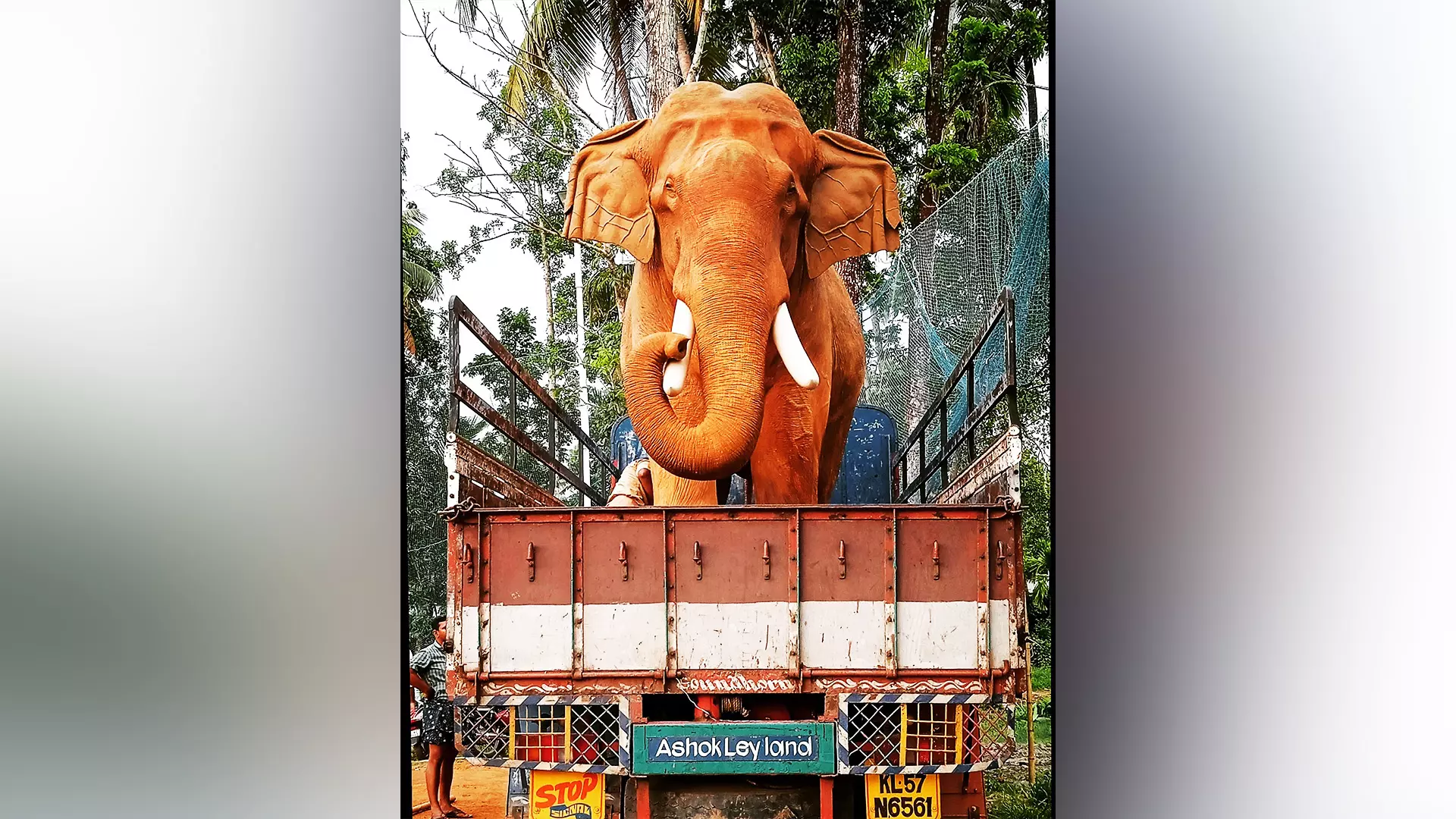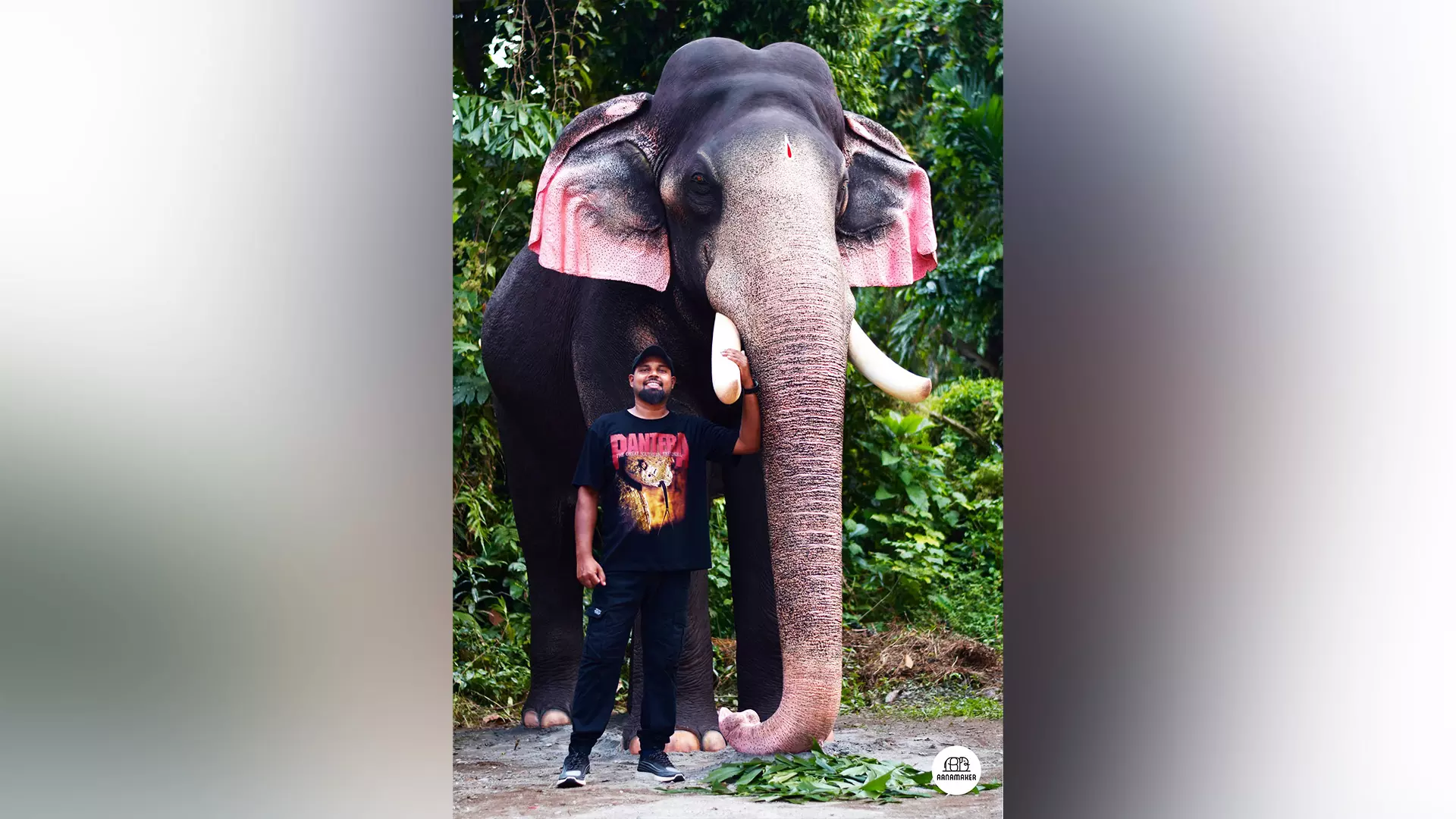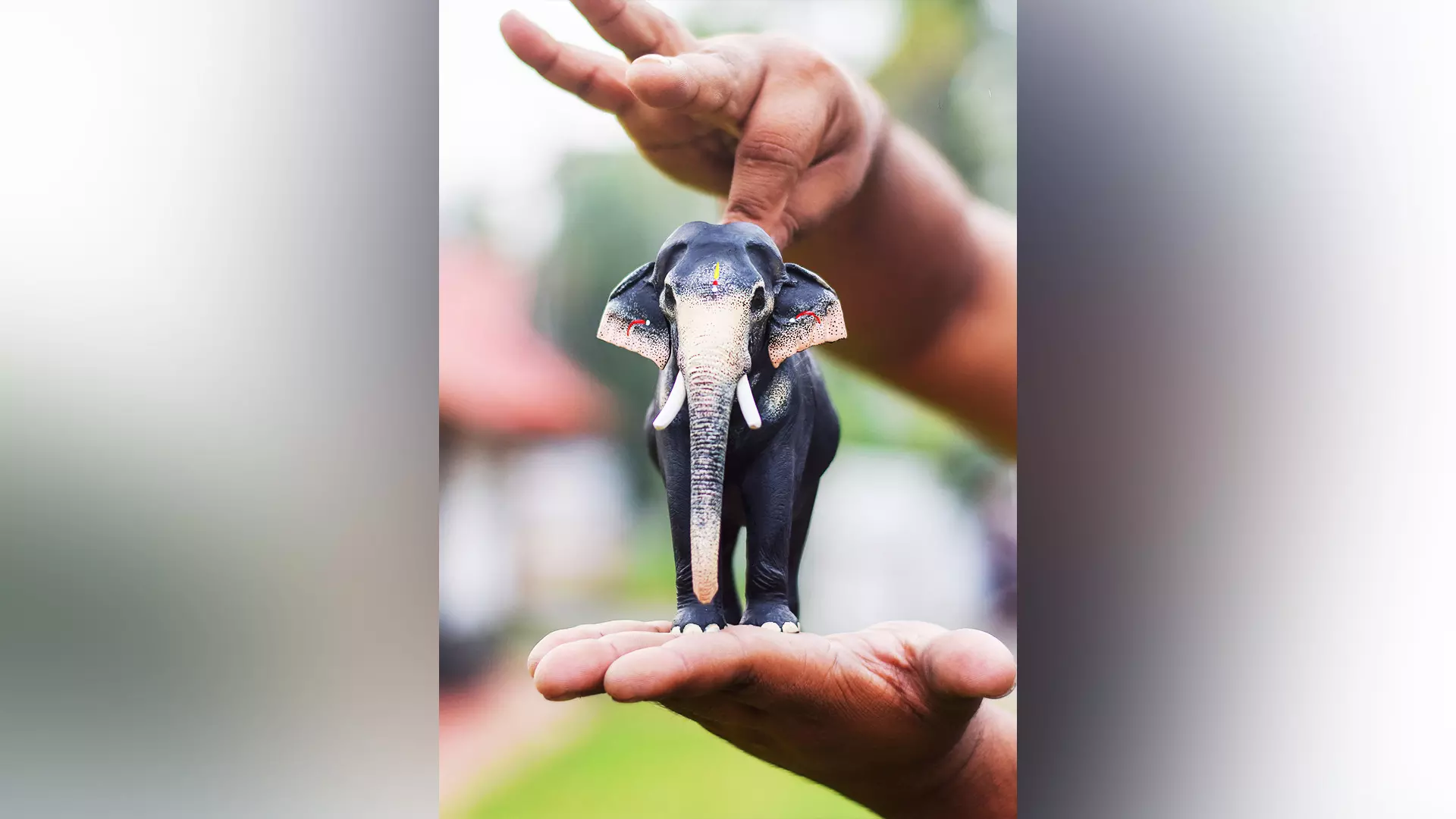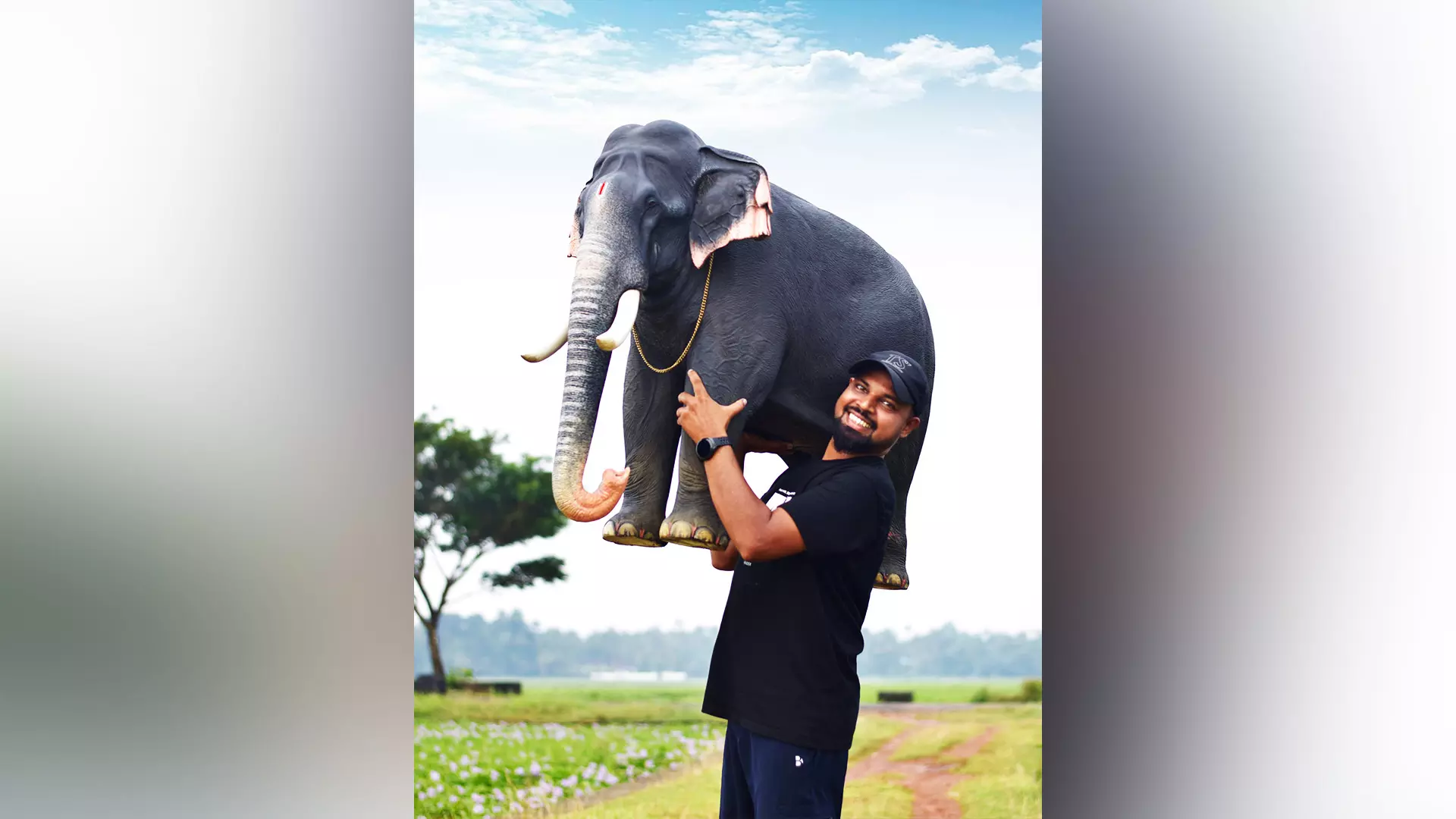
- Home
- India
- World
- Premium
- THE FEDERAL SPECIAL
- Analysis
- States
- Perspective
- Videos
- Sports
- Education
- Entertainment
- Elections
- Features
- Health
- Business
- Series
- In memoriam: Sheikh Mujibur Rahman
- Bishnoi's Men
- NEET TANGLE
- Economy Series
- Earth Day
- Kashmir’s Frozen Turbulence
- India@75
- The legend of Ramjanmabhoomi
- Liberalisation@30
- How to tame a dragon
- Celebrating biodiversity
- Farm Matters
- 50 days of solitude
- Bringing Migrants Home
- Budget 2020
- Jharkhand Votes
- The Federal Investigates
- The Federal Impact
- Vanishing Sand
- Gandhi @ 150
- Andhra Today
- Field report
- Operation Gulmarg
- Pandemic @1 Mn in India
- The Federal Year-End
- The Zero Year
- Science
- Brand studio
- Newsletter
- Elections 2024
- Events
The tale of an elephant-maker

Sooraj Nambiat doesn’t know exactly how many sculptures of elephants he has made so far.“More than 10,000 in various sizes, including the four-inch-tall macro ones,” says Sooraj, an artistic fabricator and designer of elephant sculptures based in North Paravur, 24 km from Ernakulam in Kerala. The Asia Book of Records has recognised him with a title called “Grand Master” for his...
Sooraj Nambiat doesn’t know exactly how many sculptures of elephants he has made so far.
“More than 10,000 in various sizes, including the four-inch-tall macro ones,” says Sooraj, an artistic fabricator and designer of elephant sculptures based in North Paravur, 24 km from Ernakulam in Kerala. The Asia Book of Records has recognised him with a title called “Grand Master” for his unique feat of making the highest number of realistic sculptures of elephants.
As an elephant-lover, Sooraj has a fairly good knowledge about captive elephants used for processions and festivals in the temples of Kerala. He never misses any festival such as the famous Thrissur Pooram in which elephants play a major role. Sooraj, however, believes that making the sculpture is a different ball game.

As an elephant-lover, Sooraj has a fairly good knowledge about captive elephants used for processions and festivals in the temples of Kerala. Photos: Sooraj Nambiat
“I am making only realistic sculptures of elephants for which the features, movements and gestures of the animal are important. We need to look at the animal closely, otherwise we will miss the distinctive features of its trunk, ear flaps, tusks and legs. Each sculpture of an elephant needs a special treatment,” says Sooraj. It is his love and affection for the elephants that often transforms into the sculptures — a reason why even the minute veins and scars (due to wounds caused by chains) of an elephant are visible in them.
It was while doing his MFA at the RLV College of Music and Fine Arts in Tripunithura in 2007 that he started looking at elephants seriously. Reason: The topic that Sooraj chose for his dissertation was related to the aesthetical aspects of Indian elephants. The elephants, carved out of granites in Mamallapuram (the erstwhile Pallava port, 56 km from Chennai), attracted him. After submitting his dissertation, he started making sculptures of elephants using wood. Sooraj’s first sculpture was a replica of Pampadi Rajan, one of the most handsome and celebrity elephants in Kerala, in wood. It came out more than what he expected. He started getting orders from people. And that’s how it all began. It has been more than 16 years, and Sooraj has made replicas of almost all the popular elephants (captive) in Kerala as well as abroad.

Sooraj with the fibre replica of Shivasundar.
Even though Sooraj started making the sculpture of elephants in wood, he has now shifted his medium to fibre. It is cheaper and many copies can be made using the model, which was not possible with wood. What makes Sooraj different from others is his style of approach. For Sooraj, each elephant is a symbol of culture. “We need to bring in the basic character and behaviour of the elephant to the sculpture. I want my elephant sculptures to be identified the same way the pictures of human beings are identified with,” says Sooraj, sitting inside “Aanamaker”, the gallery he opened in North Paravur in 2021 to display his elephant sculptures.
Sooraj’s love for elephants doesn’t limit him to sculptures. With his friend and filmmaker Sony Narayanan, Sooraj made a documentary on Chengalloor Ranganathan, the tallest tamed elephant to have lived in Asia so far, in 2022. Ranganathan had carried the idol of god during the Arattupuzha Pooram from 1906 to 1914, until he was attacked by Akavoor Govindan, another elephant. Despite giving proper care, the elephant succumbed to his injuries in 1917. Ranganathan was brought from the famous Ranganatha Swamy temple in Trichy. The story doing the rounds was that the temple bought the elephant when it was a calf. It soon attained a height unimaginable for elephants those days. Ranganathan couldn’t enter the inner gate of the temple during processions due to its height. The temple authorities wanted to sell Ranganathan and one Parameshwaran Namboothiri of the Chengallur Mana bought the elephant in 1905. There is no authentic record to show how Ranganathan was brought to Thrissur. However, elephant lovers in the town believe that Ranganathan covered the distance of more than 350 km from Trichy to Thrissur by foot. In 2020, Sooraj and Sony visited the Ranganatha Swamy temple in Trichy where they got some significant details about Ranganathan from the temple mehouts.

A miniature sculpture.
The government museum of Thrissur has the mounted skeleton of Ranganathan. In 2019, Sooraj wrote to the director of the museum to give permission to measure the height of the skeleton of Ranganathan. The permission came in 2021. With the help of experts, he measured the skeleton of Ranganathan and found it to be 345 cm (11-ft and three inches). If that’s the case, Ranganathan is the tallest captive elephant that ever lived in Asia. With a height of 316 cm (10-ft and 4.5 inches), Thechikkottukavu Ramachandran is the tallest living captive elephant in India today. In 2022, the duo made a 75-minute-long documentary titled Ranganathan: The Search for the Height, claiming that Ranganathan is the tallest captive elephant so far lived in Asia.
The life-sized sculptures of elephants made by Sooraj have been installed at various temples and parks. A huge sculpture of elephant Guruvayur Kesavan (1912-1976), made by Sooraj in 2022, has been installed on the premises of the Ganesh Fort Elephant Rejuvenation Centre in Chitanda near Thrissur.
A life-sized sculpture of elephant Pampadi Rajan in wood was sent to Mumbai four months ago. Sooraj claims that the sculpture is the biggest one made of wood in India. Sooraj donated another life-sized sculpture of Pampadi Rajan to the Guruthipadam temple near his home in 2023.
“In Kerala, elephants enjoy stardom. I have made almost all elephants, mostly captive ones. I at times do more sculptures of the same elephant out of love and admiration," he says. Sooraj has made the sculptures of the 'popular' wild tuskers like Arikomban and Padayappa as well. Arikomban, a wild tusker known for his raids on shops for rice in the Chinnakanal area of Munnar, was finally tranquilized and relocated to the Periyar Wildlife Sanctuary in April, 2023. Padayappa is another wild tusker who is known for his frequent raids on the residential areas and roads in Munnar.
If you take a walk into the workshop of Sooraj, you will find many fibre pieces (of elephants) lying scattered around. Sooraj is now busy with robotic elephants, as many animal organisations are donating mechanical elephants to the temples to save the captive elephants. The life-sized replica of Thiruvambadi Sivasundar (1964-2018), another popular elephant, was Sooraj's debut robotic elephant. “Availability of elephants is the main issue due to which some turn towards dummy and robotic elephants. If you want an elephant for shooting, you need to finish so many formalities. A robotic elephant comes handy in such situations,” says Sooraj. Some animal organisations are also buying robotic elephants and donating them to temples.
In February 2023, the Irinjadappilly Sri Krishna Temple in Thrissur became the first in the country to use a robotic elephant in an effort to reduce animal cruelty. The 11-foot-tall life-sized mechanical robot, named Raman, was donated to the temple by People for Ethical Treatment of Animals (PETA). Soraj says his role is limited to the design part when it comes to robotic elephants. “The mechanical part is done by technicians. The trunk and ear flaps will be moved by using various motors fitted inside," he adds.

As some elephant owners in Kerala are not happy with the fabricators who make replicas of their elephants, Sooraj is now using the models of elephants from countries like Thailand. “I am now using the model of an elephant in Thailand because some elephant owners are not happy that we use their elephants as models for our sculptures. The 8-foot-tall cement sculpture is ready. Fibre- casting will be done on this cement structure in a couple of weeks. My dream is to make a robotic elephant following the same technology that Steven Spielberg used in Jurassic Park, says the 35-year-old artist.
